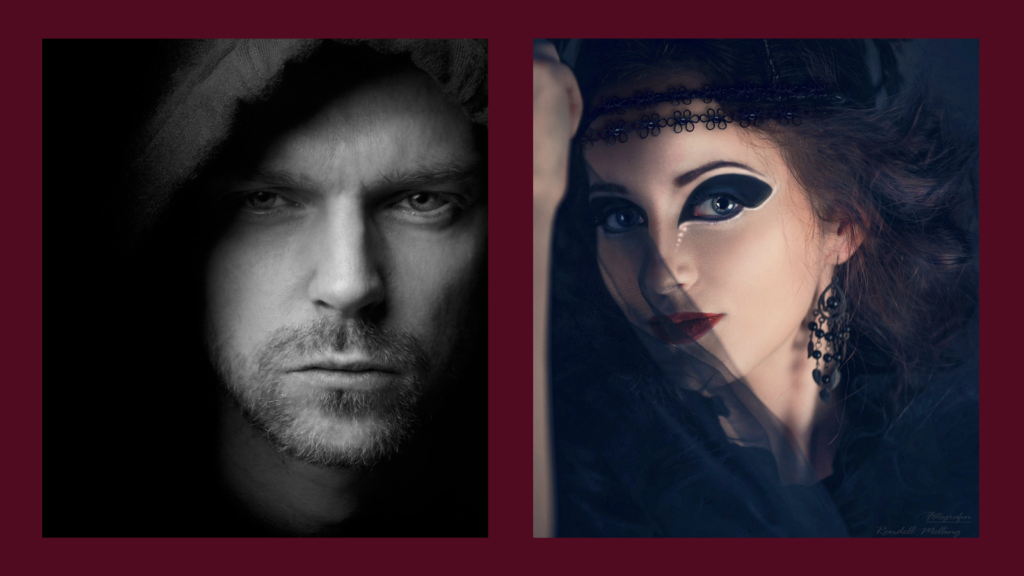The Similar & Different Ways Authors Portray Them

The results are in! Over the last couple of weeks, we’ve explored eighteen popular Gothic protagonists – eight males and ten females. I’ve highlighted their dominant character traits, both positive and negative. If you missed those posts, you can find them here and here. In this post we’re going to look at a summary of male versus female Gothic protagonists and how authors portray them in similar and different ways. Let the games begin.
Note that some of these traits such as Victor Frankenstein’s single-mindedness could be seen as either positive or negative depending on how the trait is applied. However, I’ve qualified them as either positive or negative based on how the authors have portrayed the trait in the context of the stories.
Summary – Male Protagonists
The Positive
Male characters are often intelligent or at least intellectually- adept in some area or other, enterprising and ambitious. Authors portrayed several as loyal, righteous/ upstanding/ virtuous, wise, protective and concerned for others. One – Lester Ballard – is childlike, which works well with the theme and is a startling juxtaposition to his violent tendencies. It isn’t uncommon to see a male Gothic figure described as bold and fierce as the vampire Lestat is. It’s less common though to see a gentle, compassionate soul such as Ben Mears in Salem’s Lot.
The Negative
On the opposite side of the equation, many of these male protagonists are obsessively single-minded, arrogant, stubborn, selfish, angry, violent and destructive. Some are amoral (though none as much as Dorian Gray), narcissistic, animalistic, frustrated, reckless and ill-tempered. Occasionally they’re also presented as dishonest, thieving, awkward, unattractive, impetuous, foolhardy, fearful or braggadocious.
Summary – Female Protagonists
But what about the females? It isn’t all rosy on the other side of the chromosome pair either, although the females certainly have their positive traits as well. We’ll start with those.
The Positive
Female Gothic protagonists are often committed to justice, unwilling to compromise their values, loyal, respectful of others, curious, intelligent and devoted to their faith (we’re looking at you Jane). Some are gentle, kind, likeable, clever, witty, quiet, supportive, thoughtful, hard-working, independent and strong. Others are courageous, witty, brave, determined, knowledgeable and socially competent.
The Negative
On the flip side, some are also strong-willed and outspoken to a fault. They’re often socially awkward, depressive, melancholy, brooding, solitary and selfish. Some are jealous, fiercely territorial, deceitful, powerless and deceptive. Others, like their male counterparts, are prone to violence.
What I pointed out in last week’s look at these female characters (find it here), is that a disproportionate number of them are also emotionally sensitive, delusional, suspicious, neurotic, paranoid, insecure, naïve and immature. It’s extremely common for female Gothic protagonists to be both unreliable narrators and emotionally and psychologically unstable. I mentioned my theory as to why this is so prevalent, but it merits a full post. Watch for that in the future.
Comparison
So how does it shake out?
Similarities
Both the male and female characters are often intelligent, competent and even violent although the violence is often cloaked when it comes to the females. (See my review of The Turn of the Screw for an example of this.) Both are just as likely to fight for justice and to defend those they love, although they often do so in different ways. The male and female protagonists are also just as likely to be strong and uncompromising of what they believe. And lastly, both types of characters can be moody and awkward.
Differences
But…there are still plenty of differences.
For example, though they’re both likely to commit violence, authors portray male protagonists as much angrier than females. The males are also more stubborn, single-minded and ambitious. These could be be positive traits. However, they’re more likely to apply them in ways that are sometimes bold, but more often foolhardy and even reckless.
As I mentioned before, the most striking difference on the part of the females is that authors are more likely to portray them as having various emotional dysfunctions. The best of them are apt to be paranoid, jealous and suspicious. The worst are psychologically unstable, neurotic and divorced from reality.
I would summarize these differences as being an outward versus and inward dysfunction. When the male characters go awry it’s in reckless abandon of any moral center, an embrasure of violence, or an obsession with some pursuit to the point of destruction. When the females wander into unhealthy territory, it tends to be an inward departure from reason and a sound assessment of their environment.
To analyze these would be another post altogether, so I’ll leave it at that for now. But suffice it to say that there are still more similarities than differences. It just so happens that the differences stand out strongly!
If you enjoyed this post, share it with your friends!